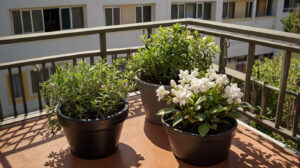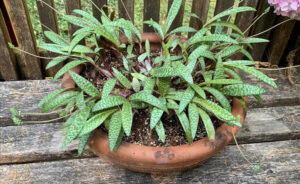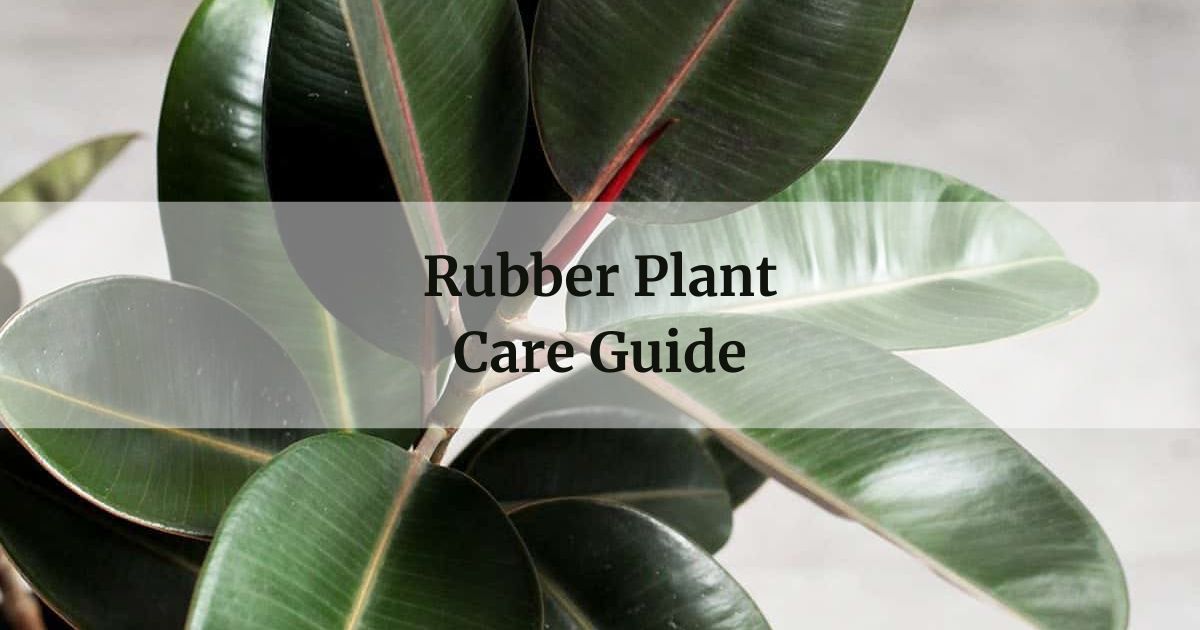
The Rubber Plant (Ficus elastica) has been a delightful addition to any indoor garden. Its striking appearance and vibrant foliage make it a popular choice for gardeners of all levels of experience.
In this article
- 1 Pros and Cons of Growing Rubber Plants
- 2 Appearance of the Rubber Plant
- 3 Caring for Rubber Plants
- 4 Toxicity Level of Rubber Plant
- 5 Light Requirements for the Rubber Plant
- 6 Watering the Rubber Plant
- 7 Fertilizing the Rubber Plant
- 8 Potting the Rubber Plant
- 9 Propagation of Rubber Plant
- 10 Growth and Development of Rubber Plants
- 11 Managing Pests and Diseases for the Rubber Plant
- 12 Complimentary Plants with your Rubber Plant
Pros and Cons of Growing Rubber Plants
- Pros:
- Rubber plants help improve indoor air quality.
- They are low maintenance and easy to care for.
- Resilient to some neglect and occasional missed watering.
- Cons:
- Can grow quite large, requiring space for mature plants.
- Susceptible to common houseplant pests like spider mites.
- Can be toxic if consumed by pets or children.
Appearance of the Rubber Plant
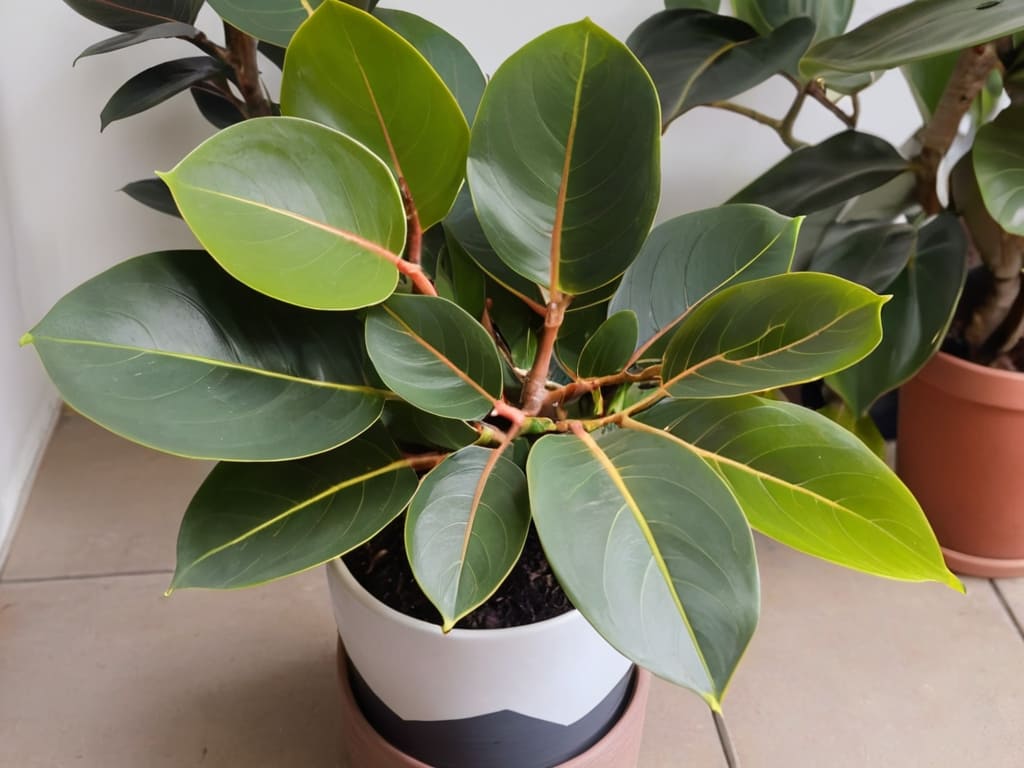
The Rubber Plant features large, glossy, dark green leaves that can grow up to 12 inches long. Its oval-shaped leaves add an elegant touch to any indoor space. This plant is also known for its unique reddish-brown stems, which create an interesting contrast against the lush green foliage. With its robust growth and impressive size, the Ficus Elastica instantly becomes a focal point in any room.
Key Features:
- Large, oval-shaped leaves
- Dark green foliage
- Attractive reddish-brown stems
- Beginner-friendly
- Moderate water and sunlight requirements
- Suitable for medium-sized pots
Great for People who:
- Who want to add some tropical vibes to their home
- Looking for a low-maintenance yet visually stunning plant
- Seeking a focal point plant for their living space
Great for these Spaces:
- A room with higher ceilings
- Brightly-lit areas that receive indirect sunlight
- Rooms that need a touch of natural greenery
RELATED: My Top 5 Beautiful Houseplants
Caring for Rubber Plants
Caring for the Rubber Plant is relatively easy, making it suitable for beginners. It thrives in moderately moist soil, so make sure to water it when the top inch of soil feels dry to the touch. Moreover, placing the plant in a spot with bright indirect light promotes healthy growth. Remember to rotate the plant occasionally to ensure even growth and prevent it from leaning towards the light source.
Toxicity Level of Rubber Plant
The Rubber Plant poses a moderate level of toxicity if consumed by pets or children, making it crucial to exercise caution in its placement within your home. This lush foliage harbors a sap that, if ingested, can lead to mild to moderate symptoms of irritation or discomfort. To safeguard your loved ones, especially curious pets and young children, it is advisable to position the plant strategically out of their reach. Opt for elevated surfaces or secure locations that prevent accidental contact with the plant, ensuring a safe and harmonious coexistence with this botanical beauty in your indoor space.
Light Requirements for the Rubber Plant

To thrive, the Rubber Plant requires bright indirect light. Place it near a window where it can receive plenty of filtered sunlight. However, direct sunlight can scorch its leaves, so ensure it is shielded from harsh rays. If your home lacks sufficient natural light, you can supplement it with artificial grow lights.
| Light Conditions | Effect on Ficus Elastica |
|---|---|
| Bright Indirect Light | Promotes healthy growth and color |
| Low Light | Slows down growth, may affect color |
| Direct Sunlight | Can lead to leaf burn and damage |
Watering the Rubber Plant
Maintaining proper watering habits is crucial for the health of your Rubber Plant. Water the plant when the top inch of soil feels dry to the touch. Ensure that it receives sufficient water but avoid overwatering. Overwatering can lead to root rot and other moisture-related issues.
Here are some guidelines to follow:
- Check the soil moisture regularly by inserting your finger into the soil.
- Water thoroughly until water drains out of the pot’s drainage holes.
- Empty the excess water from the saucer to avoid standing water.
Fertilizing the Rubber Plant
Consistent fertilization is essential for nurturing the vibrancy and health of your Rubber Plant. As the plant thrives during its active growth phases in spring and summer, it benefits from regular feeding every 2-4 weeks using a well-balanced houseplant fertilizer. This nutrient boost supports robust foliage and sustained growth. During the plant’s dormant period in fall and winter, adjust the feeding schedule to a more spaced-out routine, applying fertilizer every 6-8 weeks or none at all.
Recommended fertilizer dosage for the Rubber Plant:
| Month | Recommended Dosage |
|---|---|
| Spring (Mar-May) | 1/2 strength |
| Summer (Jun-Aug) | 1/2 strength |
| Fall (Sep-Nov) | No fertilizer |
| Winter (Dec-Feb) | No fertilizer |
Potting the Rubber Plant
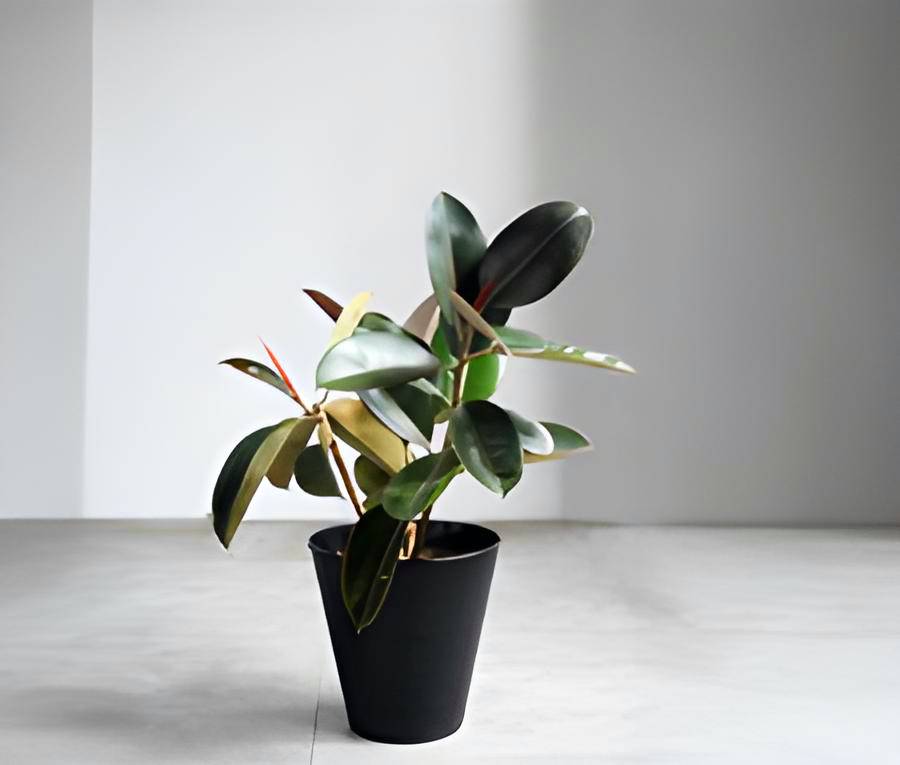
Choosing the right pot and ensuring adequate drainage is essential for the Rubber Plant’s healthy growth. Select a pot with drainage holes to avoid waterlogging. When repotting, choose a pot that provides ample space for the plant’s root system to grow. A well-draining potting mix, such as a blend of peat moss, perlite, and potting soil, is ideal for this plant.

10 Inch, Ceramic Planter Pot with Drainage Hole and Saucer, Indoor Cylinder Round Planter Pot
Propagation of Rubber Plant
Propagating the Rubber Plant is an exciting way to expand your plant collection. Follow these steps for successful propagation:
- Select a healthy stem cutting with at least two leaves.
- Dip the cut end in a rooting hormone to encourage root development.
- Plant the cutting in a well-draining potting mix.
- Keep the soil consistently moist until roots develop.
- After roots form, transfer the cutting to an appropriate-sized pot.
Growth and Development of Rubber Plants
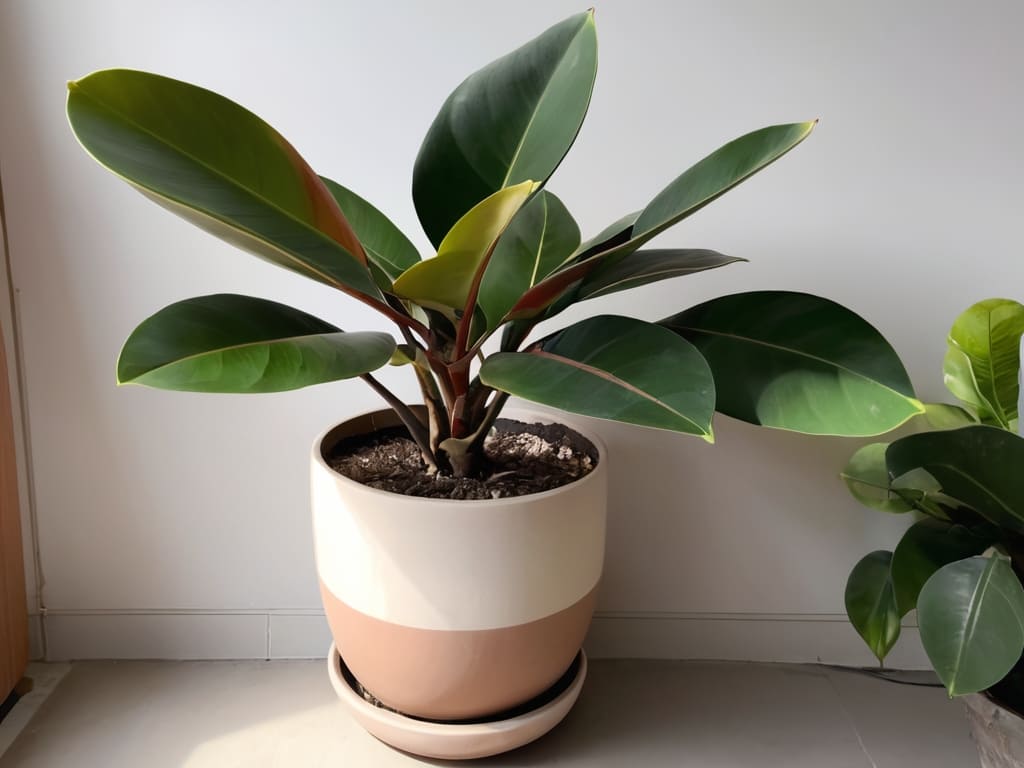
Speaking from my own personal experience, Rubber Plants thrive in bright indirect light and moderate humidity levels. It prefers temperatures between 65-75°F (18-24°C) but can tolerate slightly lower temperatures.
To keep the leaves clean and free from dust, gently wipe them with a damp cloth or give them a quick shower. A clean plant not only looks better but also helps prevent pest infestations.
Managing Pests and Diseases for the Rubber Plant
The Rubber Plant is generally resilient to pests and diseases. However, it can occasionally attract common houseplant pests such as aphids, mealybugs, and spider mites.
Regularly inspect the plant for any signs of pests, and if detected, treat them promptly using organic methods or suitable insecticides. Providing good air circulation and avoiding overwatering can help prevent fungal diseases like root rot.
Complimentary Plants with your Rubber Plant
To enhance the visual appeal of your indoor garden, consider pairing your Rubber Plant with these complementary plants:
- Philodendron
- Calathea Medallion
- Snake Plant
- Burgundy Rubber Plant (Ficus elastica ‘Burgundy’)
- Pothos
Overall, the Rubber Plant is an excellent choice for those seeking a tropical touch in their indoor space. With its striking appearance and moderate care requirements, it can bring vibrant energy into any room.
Frequently asked questions
Can I keep my Rubber Plant near a sunny window?
While the Ficus Elastica thrives in bright indirect light, direct sunlight can scorch its leaves. It’s best to place it near a sunny window, but ensure it is shielded from the intense rays.
How do I clean the leaves of my Rubber Plant?
Gently wipe the leaves with a damp cloth to remove dust and keep them clean. Giving them a quick shower can also help.
Remember to provide it with bright indirect light, water it appropriately, and fertilize it regularly to ensure its growth and development.
Happy gardening!




